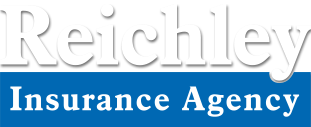Two Ways To View Insurance
Tom And Harrys Excellent Adventure
Inside the bustling confines of Café Caffeine, amidst the clinking of cups and the murmur of conversation, sat two friends and insurance agents, Tom and Harry, engaged in a spirited debate. Tom was a stickler for slashing prices, while Harry prided himself on selling the value, not just the steak.
Tom: “Harry, you’ve got to admit, nothing makes the phone ring like screaming, ‘Discounts! Get your discounts here!’ It’s like opening the floodgates.”
Harry, with a mischievous grin: “Oh, Tom, that’s one way to do it. If you’re running a supermarket sweep. Me? I prefer to think of insurance as fine dining, a vule. Why sell fast food when you can offer a gourmet experience?”
Tom: “Gourmet? It’s insurance, Harry, not a Michelin-star restaurant. People want savings, not caviar with their coverage.”
Harry: “Ah, but that’s where you’re missing the true value or flavor, my friend. When I sell a policy, I’m not just offering protection; I’m selling peace of mind and 24/7 concierge. It’s like insurance à la carte. Sure, you might lure them in with discounts, but I keep them coming back with the full-service experience.”
Tom: “Concierge, huh? What do you do, tuck them in at night and read them their policy until they fall asleep?”
Harry, laughing: “Only on request. But think about it. When someone’s life goes sideways, they don’t remember the 10% they saved. They remember the voice on the line or the personal visit, helping them patch their world back together. That’s value, my friend.”
Tom, chuckling: “I suppose next you’ll offer to insure their heartbreak too?”
Harry: “Now there’s an idea! ‘Broken hearts mended here. Terms and conditions apply.’ I’d buy that.”
Tom: “Alright, Harry, you’ve made your point. Value has its… well, value. But if you start offering heartbreak insurance, sign me up. I might finally get over my high school crush.”
Harry: “Deal. But it comes with a premium. After all, the true value is priceless.”
As they shared a laugh, it was clear that while their methods might diverge, their hearts and their humor were in the right place. In the world of insurance, whether you’re selling on price or on value, the real win is in making sure your clients feel protected, appreciated, and, yes, even a little bit entertained.















